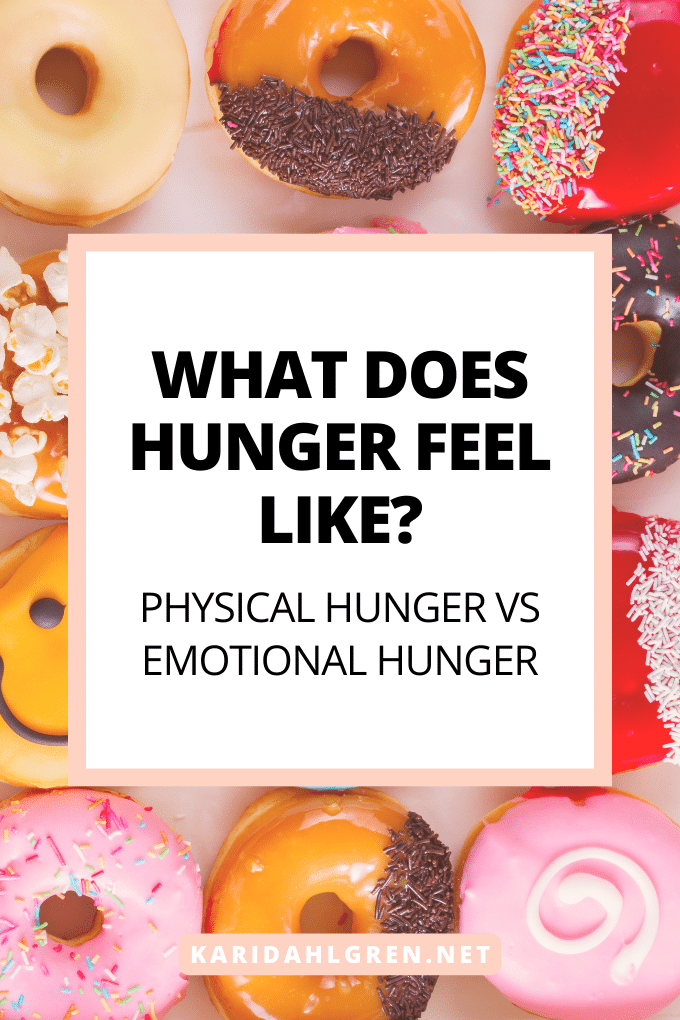
Many of us find ourselves oscillating between two extremes: struggling with overeating to the point where we no longer recognize what hunger feels like, or enduring so many restrictive diets that we end up with the same result: losing touch with hunger signals. The question “What does hunger feel like?” may seem simple but, as you can already see, it’s layered with complexity.
For many, the challenges of overeating and excessive dieting overlap, as those who overeat may turn to dieting in an attempt to regain control, only to find themselves further disconnected from their hunger signals.
As an eating psychology coach that advocates for giving up dieting and listening to your body instead, I often receive questions along the lines of: “But how can I eat when I’m hungry and stop when I’m full if I don’t even know what hunger feels like anymore?”
This article is for anyone who has ever felt lost in the maze of knowing when to eat, seeking to reconnect with the fundamental feeling of hunger and rebuild a healthier, more intuitive relationship with food.
Understanding How Hunger Works
Before we discuss the signs and sensations of hunger, it helps to know how hunger works. In essence, hunger has evolved as an adaptive mechanism to ensure survival. It motivates the search for food and consumption of enough calories to meet the body’s energy needs.
Hunger is primarily regulated by hormones that communicate between the digestive system and the brain. The key hormones involved are:
- Ghrelin: Often called the “hunger hormone,” ghrelin is produced in the stomach and signals the brain to increase appetite. When your stomach is empty, ghrelin levels rise, prompting the sensation of hunger.
- Leptin: Produced by fat cells, leptin communicates with the brain to reduce appetite. As fat stores increase, leptin levels rise, signaling the body to eat less.
- Insulin: Primarily known for regulating blood sugar levels, insulin also plays a role in hunger. After eating, insulin levels rise, promoting the storage of nutrients and suppressing appetite.
- Peptide YY (PYY): This hormone is released by the intestines after eating and acts as an appetite suppressant. Higher levels of PYY are associated with a feeling of fullness and reduced food intake.[1]
The hypothalamus, a region in the brain, is the central control center for appetite.[2] It receives signals from these hormones and other factors to regulate food intake.
Neurotransmitters like dopamine and serotonin also play a role in hunger and eating behavior. Dopamine is associated with the reward and pleasure aspects of eating, while serotonin can influence mood and appetite.
Hunger is not only driven by physiological signals but also influenced by external factors like the sight and smell of food, social settings, and emotional states. Internal cues, such as the stretching of the stomach and nutrient levels in the blood, also provide feedback to the brain about the need for food.[3]
Signs & Sensations of Hunger
Recognizing true hunger signals is a key step in making more informed decisions about when and what to eat, helping you avoid overeating or undereating. Furthermore, it’s essential to distinguish between physical hunger, which is a biological need for fuel, and emotional hunger, with is a maladaptive response to emotional discomfort.
What does hunger feel like, physically and emotionally? Let’s explore both dimensions.
Signs of Physical Hunger
Physical hunger arises from your brain communicating your body’s need for energy. These signals can show up in a variety of physical and emotional responses that essentially implore you to stop what you’re doing and eat.
Physical signs that you are hungry may include:
- Empty Feeling in the Stomach: This can sometimes feel like a gnawing sensation. It’s often the first sign of true physical hunger.
- Hunger Pangs: These are intermittent spasms that can occur in the stomach due to the absence of food.
- Growling or Rumbling in the Stomach: This is caused by the movement of gas in the intestines and stomach, often due to the body preparing for a meal.
- Feeling Weak or Low Energy: Without sufficient food intake, the body may lack the energy it needs to perform everyday tasks, leading to feelings of weakness or fatigue.
- Difficulty Concentrating: The brain needs glucose to function properly. Without adequate food intake, cognitive abilities like concentration can be affected.
- Mood Changes: You might experience irritability or mood swings when you’re hungry, often referred to as being “hangry” (a combination of hungry and angry).
- Dizziness or Light-headedness: In extreme cases of hunger, some people may feel dizzy or light-headed due to low blood sugar levels.
- Headaches: Some people may experience headaches when they are hungry, also likely related to dropping blood sugar levels.
- Nausea: Some people might feel nauseated if they haven’t eaten in a while, although this varies from person to person, as do all of these signs of hunger.
When physical hunger strikes, we might have a clear craving for a specific food, or we might find ourselves uncertain about what we actually want to eat. Hunger and cravings can occur on their own, without the presence of the other.
If you ever feel hungry but nothing sounds good, it’s important to eat when you’re hungry. If you ignore your hunger, you run the risk of feeling extreme hunger later, which may result in overeating.
Signs of Emotional Hunger
Emotional hunger is separate from physical hunger. While physical hunger is an expression of a biological need for fuel and sustenance, emotional hunger serves as a maladaptive coping mechanism for unwanted emotions. By discerning between physical hunger vs emotional hunger, you can increase self-awareness and promote better eating habits.
Signs of emotional hunger may include:
- Urgency: Emotional hunger can manifest suddenly, creating an intense and urgent need to eat. This is often contrasted with physical hunger, which typically grows over time.
- Specific Cravings: Emotional hunger is usually associated with a craving for specific foods, often comfort foods that are high in sugar, fat, or both.
- Seeking Pleasure: While emotional eating is often associated with avoidance of negative emotion, some emotional eating occurs in pursuit of positive emotions. This is known as hedonic eating, or “eating for pleasure,” and it’s characterized by cravings for hyperpalatable foods.
- Eating to Suppress Emotions: Emotional hunger can cause individuals to eat in order to suppress negative emotions like sadness, loneliness, boredom, stress, or anxiety.
- Eating Beyond Fullness: Despite feeling physically full, emotional hunger can fuel a desire to continue eating.
- Feeling Full but Unsatisfied After Eating: Most frequently seen in dieters, eating a meal that doesn’t include any enjoyable foods can lead to feelings of dissatisfaction, which can perpetuate cravings for more food. These cravings stem from emotional hunger rather than physical hunger.
- Eating in Social Situations: Sometimes, the act of socializing can make you want to eat more, even if you’re not physically hungry.
- Feeling Guilt or Shame After Eating: Unlike physical hunger, which is satisfied by eating, emotional hunger can lead to feelings of guilt or shame post-eating, especially if the person views their eating behavior as a lack of self-control.
- Triggered by Emotional Events: Emotional hunger can be triggered by both negative and positive emotional events, including stress, personal conflict, celebrations, or even boredom.[4]
Emotional hunger can create a false sense of hunger even after eating. It’s vital to differentiate it from physical hunger, as emotional eating often leads to a cycle of shame and increased cravings, which fails to address the underlying discomfort.
Factors That Can Make It Difficult to Know What Hunger Feels Like
While it helps to know the signs and symptoms of hunger, it’s also crucial to understand potential barriers that can spur confusion around the question, What does hunger feel like?
Here are common factors that can interrupt normal hunger signals:
- Excessive dieting: Constantly restricting food intake can disrupt natural hunger signals by altering hormone levels and circadian rhythms.[5] This can make it hard to recognize true hunger, turning down the volume on your body’s internal cues.
- Overeating tendencies: Regularly eating beyond fullness can dull your sensitivity to hunger signals.
- Stress: Stress has a two-fold impact on appetite. First, stress suppresses appetite, causing disconnection from physical hunger signals.[6] Stress is also associated with cravings for hyperpalatable foods, which can heighten emotional hunger and blur the lines with physical hunger.[7], [8]
- Night eating: When large amounts of food are consumed in the evening or in the hours before bed—or even in the middle of the night—it can diminish feelings of hunger the next day, particularly in the morning.
- Sleep deprivation: While most items on this list can dull hunger signals, sleep deprivation increases ghrelin levels while suppressing leptin levels, causing increased appetite.[9] This appetite increase can cause some people to reach for food when the body actually needs rest.
- Psychological factors: Stress, anxiety, or depression can lead to emotional eating, where food is used as a coping mechanism rather than a response to actual hunger. When food is frequently used as a coping mechanism, it can diminish clarity between physical and emotional hunger.
- Medical conditions: Conditions such as diabetes, thyroid disorders, or digestive issues can affect your appetite and hunger signals.
- Medications: Certain medications can increase or decrease appetite as a side effect, making it challenging to gauge true hunger.
Dehydration and Hunger Confusion: While it’s commonly believed that dehydration is often mistaken for hunger, many clinical studies have debunked this myth, showing no associations between thirst and hunger or excessive food intake.[10], [11] It’s important to stay hydrated, but it’s equally crucial to listen to your body for true hunger signals, rather than assuming thirst is disguised as hunger.
How to Recognize Your Hunger Signals Again
Now that you understand how to recognize the signs of hunger and the obstacles that can obscure your hunger signals, let’s delve into actionable steps you can take to apply these insights in your daily life. By doing so, you’ll enhance your awareness of physical hunger and foster a healthier relationship with food.
Here are steps for getting back in touch with feelings of physical hunger:
1. Stop Denying Your Hunger
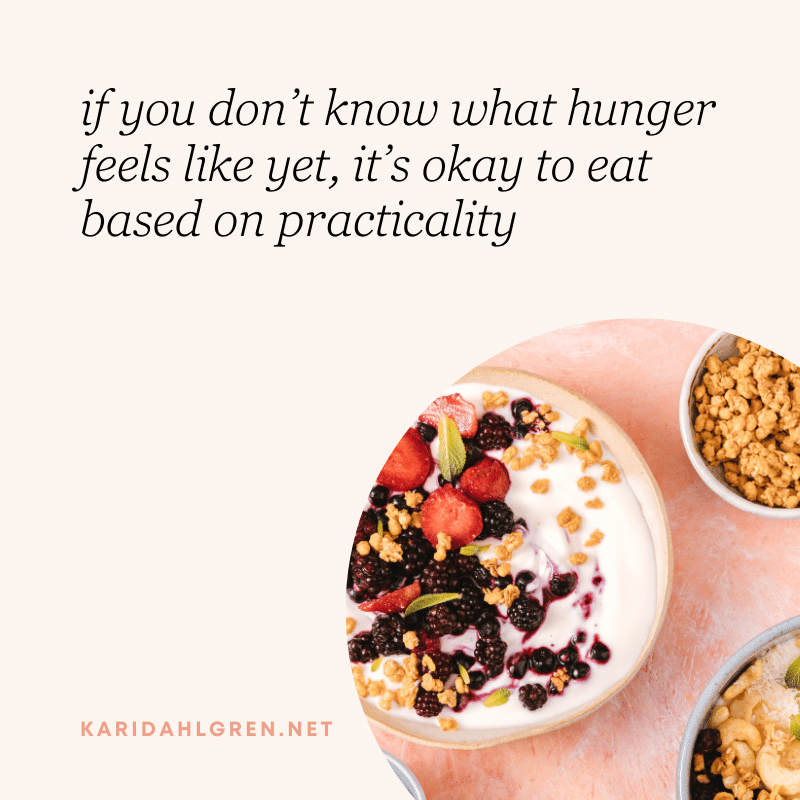
To reconnect with your hunger, start by tuning into physical sensations like an empty stomach, growling, or low energy. If you have a history of excessive dieting, it’s normal to feel uncertain about what hunger feels like. To reconnect with hunger, it’s important to give up restrictive diets, stop denying your hunger signals, and trust your body again.
For many, the idea of giving up dieting can feel like losing control. However, it’s essential to understand that dieting often leads to a restrict-binge cycle, where excessive restriction is followed by overeating and a lack of control. This cycle can create extreme swings between hunger and fullness, eventually dulling your ability to sense both.
As you work towards feeling your hunger again, it’s important to eat in a way that fuels your body instead of going long periods of time without eating just because you don’t feel hungry. This is closely related to the concept of practical hunger in intuitive eating. Regardless of physical hunger, it’s wise to fuel your body with a healthy snack or meal if you’ve gone too long without eating.
2. Develop Emotional Awareness to Identify Emotional Hunger
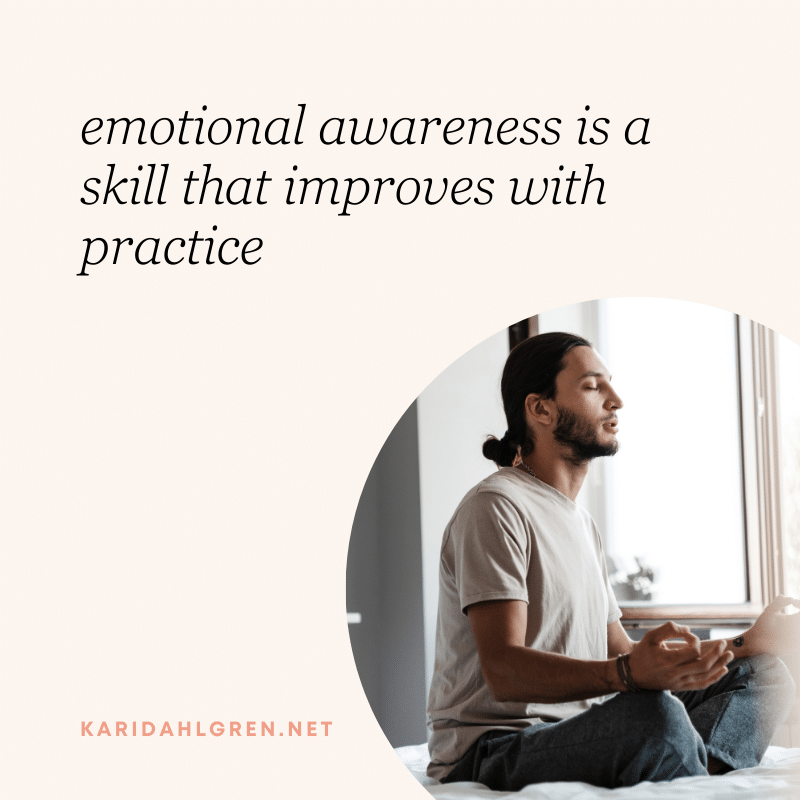
Another way to help feel your hunger again is to distinguish between emotional and physical hunger. Emotional eating often arises from a desire to soothe, distract, or numb uncomfortable emotions like stress, sadness, or boredom. By tuning into your emotions, you can start to recognize when you’re reaching for food as a coping mechanism rather than from physical hunger.
My Stop, Drop, & Feel technique can be instrumental in this process:

When you feel the urge to eat emotionally, take a moment to pause (Stop), physically relax and turn your attention inward (Drop), and then label the emotions you’re experiencing (Feel). This practice, which applies the concept of urge surfing to compulsive eating, helps you ride out the emotional wave without turning to food for comfort.
Like any skill, emotional awareness improves with practice. The more you turn inward to label your emotions in the precise moment that you want to eat without hunger—when uncomfortable emotions are often at a peak—the more adept you’ll become at distinguishing emotional hunger from physical hunger.
3. Foster Emotional Tolerance to Distinguish Emotional Hunger from Physical Hunger
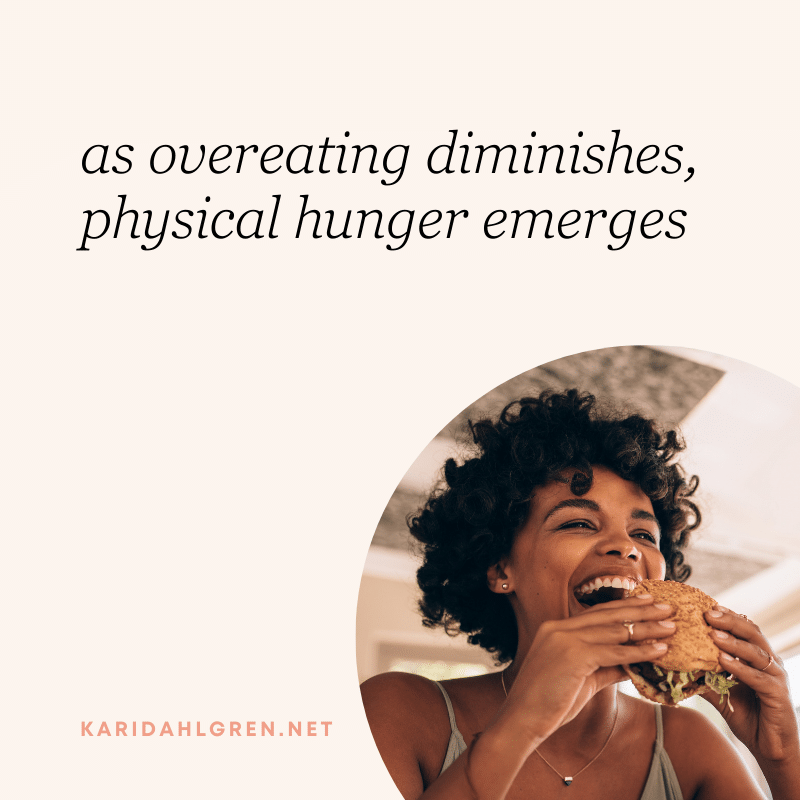
By practicing the Stop, Drop, & Feel method, you can develop both emotional awareness and emotional tolerance, also known as distress tolerance. This involves allowing yourself to feel and sit with uncomfortable emotions without immediately turning to food for comfort. It’s about acknowledging that while these feelings may be unpleasant, they are temporary and manageable.
As you build emotional tolerance, you may find that your tendencies to eat in response to emotions diminish. This creates space for your physical hunger cues to become more prominent and easier to identify. Over time, this can lead to a more balanced relationship with food, where eating is driven by physical need rather than emotional escape.
4. Manage Stress and Sleep for Healthy Hunger Regulation
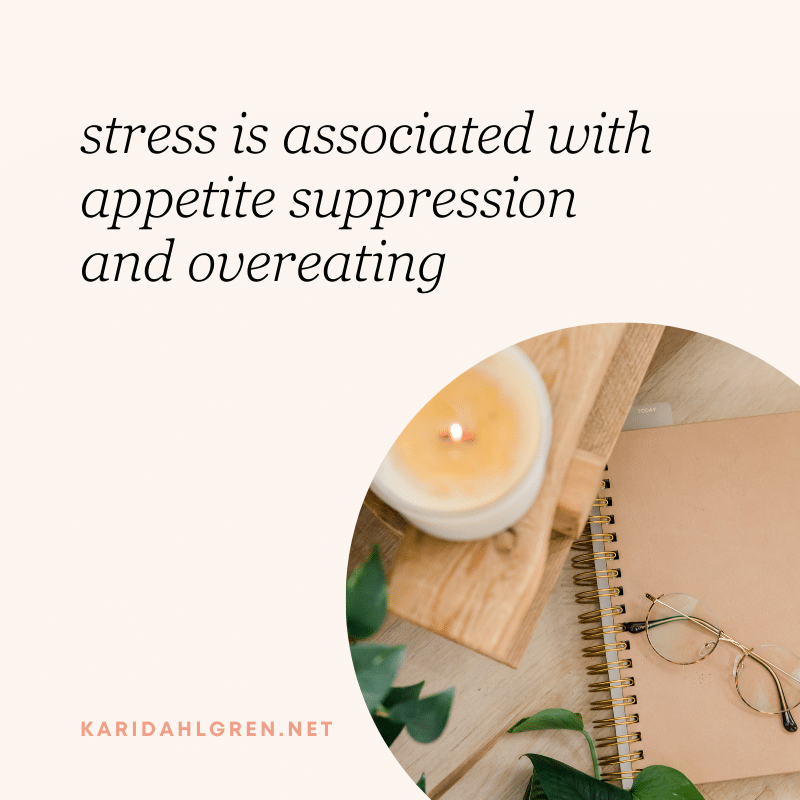
Stress can act as an appetite suppressant and trigger emotional hunger, leading to confusion between emotional and physical hunger signals. It’s important to incorporate stress reduction techniques into your daily routine to help regulate your appetite and distinguish between the two types of hunger.
Here are some stress reduction techniques that can be beneficial:
- Progressive Muscle Relaxation: This technique involves tensing and then relaxing each muscle group in your body, and consistently practicing it has been found to reduce night eating tendencies.[12] When large amounts of food are not consumed at night, it can help improve appetite the following morning and bring more clarity to the feeling of physical hunger.
- Meditation: Regular meditation can help you become more aware of your thoughts and feelings, including those related to hunger.
- Mindful Eating: Paying attention to the taste, texture, and sensations of your food can help reduce stress and improve your connection with hunger signals. It can also help you eat slower and reduce overeating, fostering a clearer understanding of your body’s true hunger signals.
- Regular Exercise: Engaging in physical activity can reduce stress and improve your overall sense of well-being.
By incorporating these stress reduction techniques into your life, you can help manage stress and sleep better, which are essential for healthy hunger regulation and distinguishing between physical and emotional hunger.
5. Eat When You’re Hungry, Stop When You’re Full
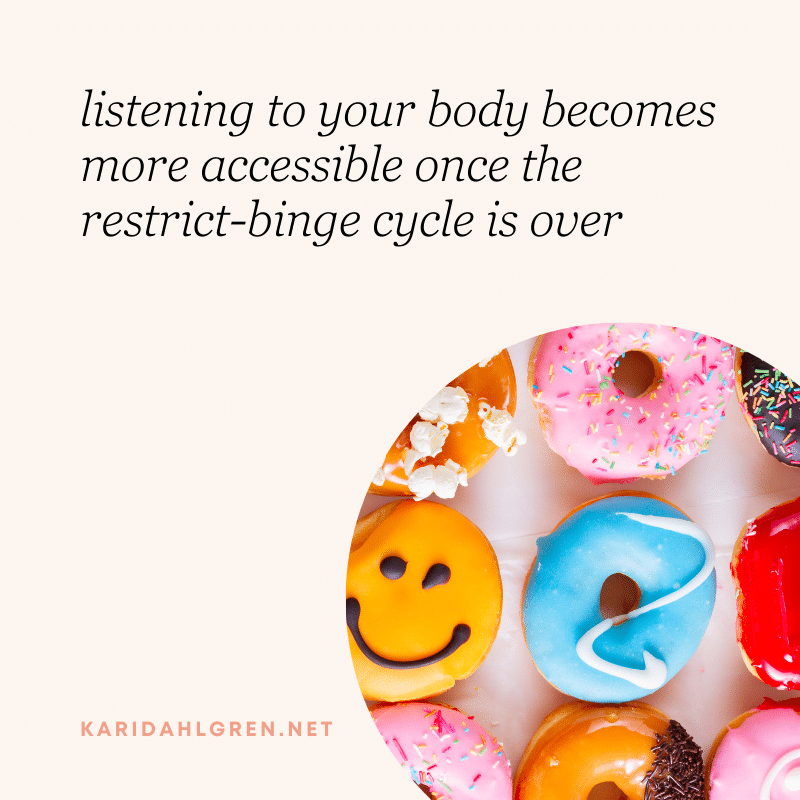
As you enhance emotional self-regulation skills and manage any excessive stress, you’ll gain clarity between physical hunger and emotional hunger. You’ll also reduce emotional eating and overeating tendencies, which can help the feeling of physical hunger reemerge.
Once you start to notice the signs of physical hunger, continue to foster the ability to listen to internal body cues by avoiding restrictive diets. Instead, aim to establish a pattern of “normal eating,” which means eating only when you’re hungry and stopping when you’re full. While this may seem challenging for those who are still relearning their hunger cues, it’s a goal that becomes increasingly attainable as you enhance your emotional awareness, emotional tolerance, and stress management skills.
What Does Hunger Feel Like Beyond Dieting and Overeating?
As we unpacked the complex question “What does hunger feel like?”, we unraveled the differences between physical and emotional hunger, and the often-blurred lines caused by overeating and restrictive dieting. It’s a path many of us navigate, filled with confusion and frustration, but also hope and potential for healing.
As you step forward, remember that rediscovering the sensation of true hunger is not just about identifying growling stomachs or energy dips. It’s about peeling back the layers of emotional eating, stress-induced cravings, and any restrictive dieting that has muted your body’s natural signals.
If you’d like to get back to a place where you feel normal around food, that’s my specialty. As a great next step, I recommend my free book and complimentary 5-day email course, which are available below:
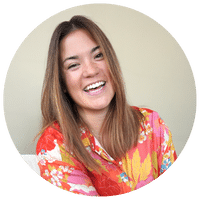


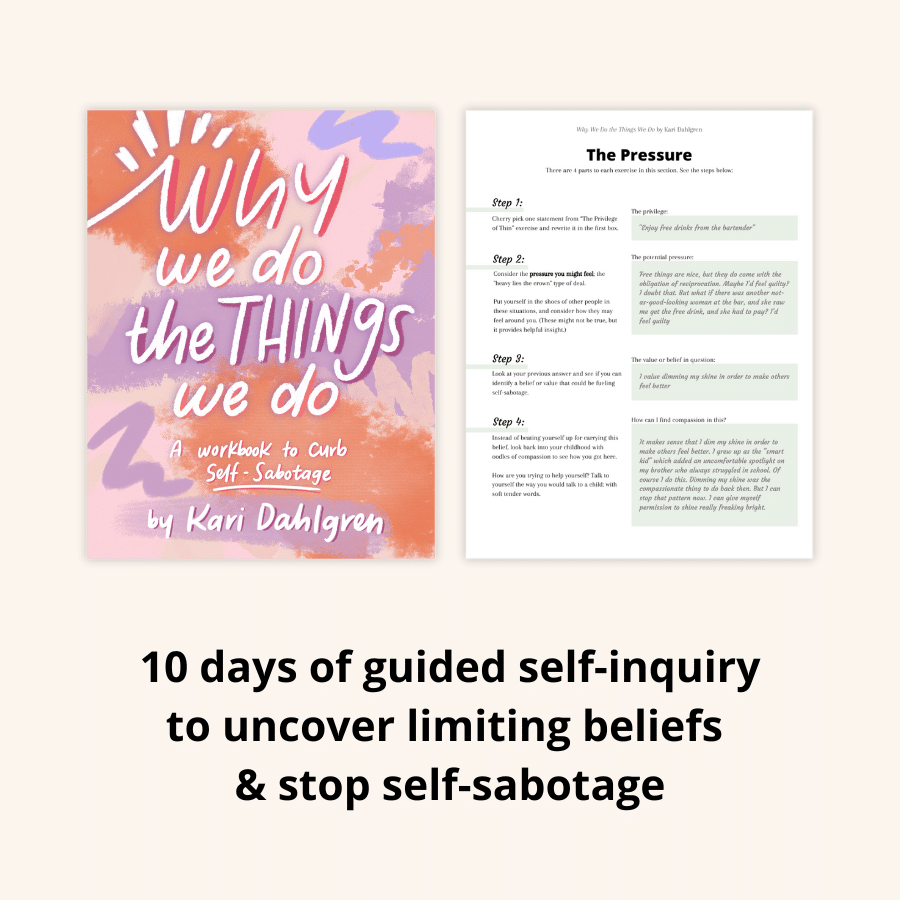
Hello,
Thank you so much for this information. As someone who has struggled with their weight their entire lives, this is truly life changing. I am only now just beginning the journey to stop dieting and to trust my body, and it is definitely terrifying since I do not want to lose weight. But I do not want to spend the rest of my life counting calories. After all, life is meant to be enjoyed. I just had one question though, I have been trying to eat in a practical way since I have no idea what hunger feels like, and use the SDF technique, and I have not had any desire to eat any junk foods or dessert in days. But my question is if the goal is to only eat when I am hungry and to stop when I am full, then when do I make room for dessert or a piece of chocolate? Do I wait until I am hungry or it is practical to eat, and instead of a meal I have dessert? Or do I purposely make the meal small so that before I reach fullness I still have room for dessert? Because to be honest I have never had dessert because I was hungry. For me it was always sort of a bonus. But now that the goal is to only eat when hungry, I am trying to figure out what is healthier, to replace a healthy lunch with cake so that I don’t end up eating both, or to cut my lunch in half so that I fill up with the cake? And also how do you know that a craving is just a normal craving, not an emotional response? For example, since I have started the SDF, I have not had any dessert. Does that mean I will never have the desire again and if I do it means it is an emotional thing? Or is it normal to just crave it once in a while even if I am not hungry? I hope I make sense. Sorry for the long message. Thank you.
Hi Marumo! I am so glad that you find my articles helpful 🙂 and I am also happy to hear that you’re actually doing the Stop, Drop, & Feel! To answer your questions, it seems to me that you enjoy dessert, and so you may find that it’s part of a balanced diet. Sometimes you can start a meal with dessert, sometimes you can end with it. It will all change day by day, and the goal is to listen to your body and check in with yourself so frequently that you can adapt every meal to your needs at that time. It’s amazing that the SDF has gotten rid of emotional cravings before (congrats!) and I don’t think it means you’ll never genuinely want something sweet. All in all, I think it’s normal to overthink the process when you’re just learning to listen to your body. When you feel like you’re getting stuck somewhere, just go back to the basics: eat exactly what appeals to you when you’re hungry, stop when you’re full, and do the SDF when you want to eat without hunger. I hope this helps!!